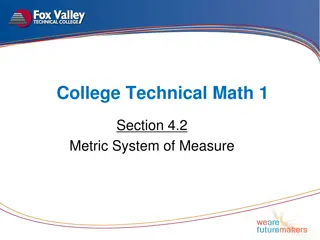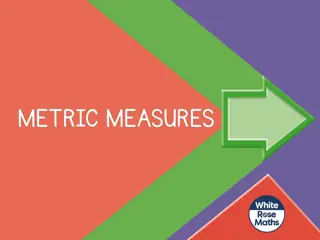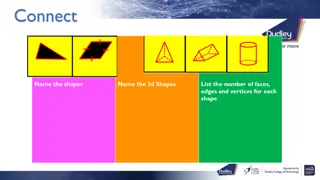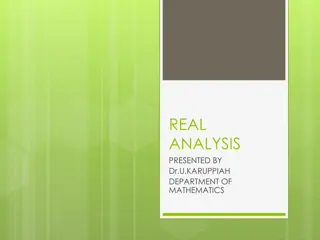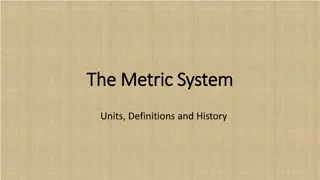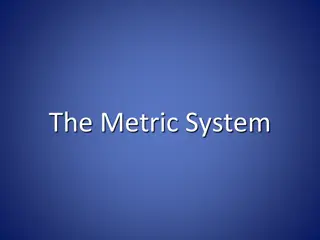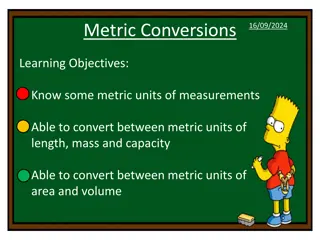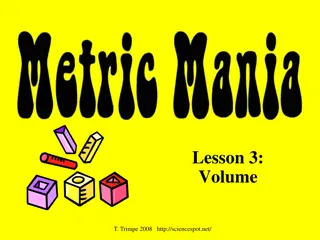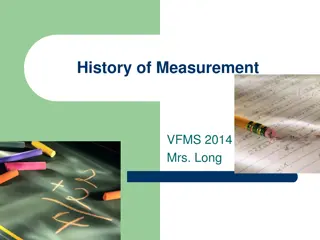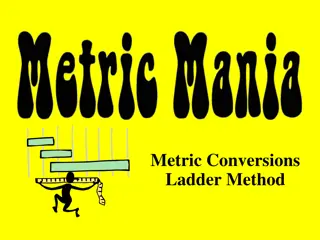Understanding the Metric System in Physics
The Metric System, also known as the S.I. System, is a reliable tool for measuring various values like length, mass, volume, and time. This system utilizes common metric units and prefixes for accurate measurements and conversions, with the Domino Method providing a helpful approach for unit conversions. Explore the fundamental principles and practical applications of the Metric System through detailed explanations and examples.
Uploaded on Sep 29, 2024 | 0 Views
Download Presentation

Please find below an Image/Link to download the presentation.
The content on the website is provided AS IS for your information and personal use only. It may not be sold, licensed, or shared on other websites without obtaining consent from the author. Download presentation by click this link. If you encounter any issues during the download, it is possible that the publisher has removed the file from their server.
E N D
Presentation Transcript
Metric System Seo Physics
What is the Metric System? Aka. S.I. System (International Standards) A tool for measurement of different values Very consistent unit of measurement For Example: Length Mass Volume Time
Common Metric Units Table Quantity Base Unit Symbol Length meter m Mass gram g Volume liters m3 (cubic meter) Time second t Force Newton N Temperature Celsius C or K (Kelvins)
Metric Prefix A prefix is added to a base unit to indicate the multiplication factor for that value. The multiplication factors are always powers of 10 Over 20 different prefixes Common prefixes: Mega, Kilo, Centi, Mili, Micro, and Nano
Metric Prefix Table Prefix Prefix Symbol Multiplier M 106 = 1,000,000 Mega- Kilo- K 103= 1,000 BASE UNIT none 100= 1 Centi- c 10-2= 0.01 Milli- m 10-3= 0.001 Micro- pronounced as Mew 10-6= 0.000001 Nano- n 10-9= 0.000000001
Domino Method Helpful when converting between units. Rule of Thumb: The top of the "domino" is the numerator The bottom is the denominator The horizontal line is one long fraction bar (or division sign)
3 Steps for Dominos 1) Place the amount and units that are going to be converted 2) Put the conversion factors (i.e. between English and Metric units) 3) Calculate by multiplying values on the top and dividing by values on the bottom.
Example Problem Metric to metric conversions (MUST use a domino): 13500 g to Kg The Final Ans. should have 3 Sig Figs and in Scientific Notation Format: ?.?? ?????
Practice 1 1. Metric to metric conversions (MUST use domino method) 2. Final answer in Sig Figs and Scientific Notations 1520 liters to milliliters The final ans. should have 3 Sig Figs and in Scientific Notation Format: ?.?? ?????
Multiple Conversions 1. Metric to metric conversions (MUST use domino method) 2. Final answer in Sig Figs and Scientific Notations 2250 cm to km ** cm to m first. Then, to km** The final ans. should have 3 Sig Figs and in Scientific Notation Format: ?.?? ?? ???
DIY 1 1. Metric to metric conversions (MUST use domino method) 2. Final answer in Sig Figs and Scientific Notations 0.018 kg to mg The final ans. should have 3 Sig Figs and in Scientific Notation Format: ?.?? ?????
Handy Sheet for Metric Conversions Common English -aka. USA Metric equivalence's used in this class. 1 in = 2.54 cm 1 oz = 28.35 g 1 ft = 0.305 m 1 lb = 454 g 1 yd = 0.914 m 1 qt = 0.479 L 1 mi = 1.61 km 1 gal = 3.785 L
Practice 1 Metric to metric conversions (MUST use domino method): 5.5 oz to g The final ans. should have 3 Sig Figs and in Scientific Notation Format: ?.?? ????



